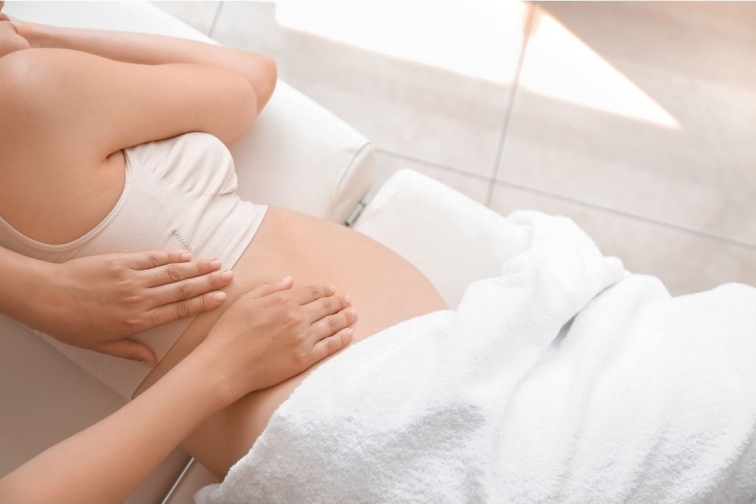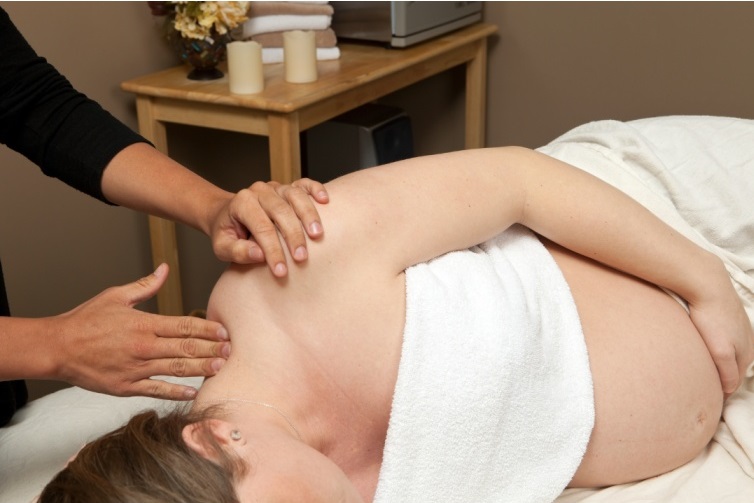What You Need to Know about Prenatal Massage
January 4th, 2022
The joy and excitement of expecting a newborn may be dampened by a painful back, swollen feet, anxiety, headaches, and a heavy belly. Luckily, pregnant women can take advantage of prenatal massage to help ease away these pregnancy problems.

What is a Prenatal Massage?
Prenatal massage or pregnancy massage is a kind of massage therapy that caters to the anatomical changes of expectant mothers. Postural changes and additional weight during pregnancy can lead to new or more physical and psychological strain.
This ancient modality dates back to the emergence of massage itself as a part of Ayurvedic medicine in India about 3,000 years ago.
Pregnancy Massage Benefits
According to Brandy John, Massage Therapy Instructor at triOS College, research has shown that pregnancy massage prevents or alleviates common pregnancy symptoms. Massage therapy for pregnancy can be a vital component of prenatal care, improving the overall pregnancy journey of the mom-to-be.
Massage during pregnancy can provide the following advantages:
- Improved mood – Studies have shown that regularly getting a massage during pregnancy can increase feel-good hormones such as dopamine and serotonin. Massage can also lower stress hormones such as cortisol. This consequently decreases anxiety, depression, and premature birth rate.
- Decreased swelling – The growing abdomen puts pressure on the legs, causing fluid to accumulate on the legs, ankles, and feet. Massage enhances circulation, thereby cutting down the swelling or edema.
- Reduced body pain – Massage therapy for pregnancy can rub away different types of physical discomfort that commonly arise during pregnancy. Examples of these include headaches, low back pain, sciatic nerve pain, leg cramps, joint pain, sinus congestion, and carpal tunnel pain.
- Better sleep – Because physical or psychological uneasiness is lessened, pregnant women can suffer less from insomnia.
- Less Labour Pain – People who received prenatal massage during labour managed their pain better and delayed the need for epidural anesthesia.

Pregnancy massage prevents or alleviates common pregnancy symptoms.
What is Different about a Prenatal Massage?
The goals of a regular and prenatal massage may overlap such as relaxing tense muscles and improving the client’s mobility. However, pregnancy massage tackles the difficulties brought about by the changes in an expectant mother’s body. Hence, the mother-to-be’s body should be well-supported and correctly-positioned during the massage for her and her baby’s comfort.
A traditional massage may involve both lying on a person’s belly and back. With prenatal massage, the first position is difficult while the latter can hinder the blood flow to the baby and make the mother queasy.
“Massage for pregnant persons will include some precautions that may not necessarily be used for a non-pregnant person,” John explained.
Pregnancy massage may entail the following differences:
- positioning the client differently on her left side to aid circulation during the massage
- utilizing particular holes and cushions when the client is facing down to allow room for her growing abdomen and breasts
- limiting the use of some modalities such as heat and rocking techniques
- utilizing support pillows to allow the client to lie on her side
- adapting the treatment plan and techniques used at certain points to ensure optimal health of the mother and the child
- asking the client to sit upright or partially recline
- using lighter pressure in general
“Take a thorough health history assessment and evaluate frequently throughout the treatment to ensure a safe and effective treatment plan customized to the individual’s goals and needs at that time,” John advised.
“Massage for pregnant persons will include some precautions that may not necessarily be used for a non-pregnant person.” – Brandy John, Massage Therapy Instructor at triOS College
She added that the clients can also inform the staff that they are pregnant when they book a treatment, so the therapist can prepare any extra equipment such as blood pressure cuffs and pillows. This will allot more time for the actual massage.
When is It Safe to Get a Prenatal Massage?
John said that getting a massage during pregnancy is considered safe and effective at all stages. It also maintains health and wards off concerns. “Clients should take time for themselves and their baby to prevent issues rather than wait for the problems to occur before they get the treatment,” she added.
If you have a serious medical condition, check with your physician to get the green light for pregnancy massage.
Prenatal Massage Certification
In Canada, a prenatal massage certification is not required to practice massage therapy for pregnancy. However, students can freely take additional continuing education as with any specific modality.
Do you want to make a difference in the lives of people by relieving them of their body pain? triOS College offers an 88-week Massage Therapy diploma program in our Toronto, Mississauga, Brampton, Hamilton, Kitchener, London, and Windsor campuses. Recognized by the College of Massage Therapists of Ontario and preliminarily accredited by the Canadian Massage Therapy Council for Accreditation, the program comes with 440 clinical hours of hands-on training and one-on-one career assistance.
Visit triOS College’s Massage Therapy webpage to learn more about the diploma program.
